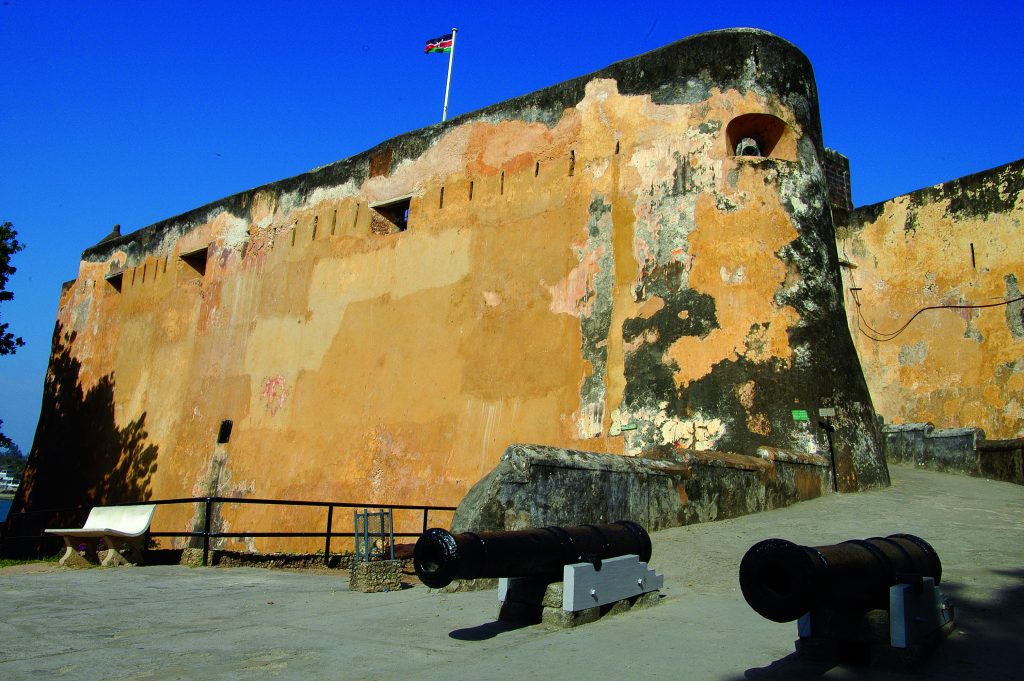
The Fort is located in Mombasa City on the coast of Kenya. Designed by Giovanni Battista Cairati, it was built by the Portuguese in 1593-1596 to protect the port of Mombasa. The Fort is one of the most outstanding and well preserved examples of 16th Portuguese military fortification and a landmark in the history of this type of construction.
The Fort’s layout and form reflected the Renaissance ideal that perfect proportions and geometric harmony are to be found in the human body. The property covers an area of 2.36 hectares and includes the fort’s moat and immediate surroundings.
Outstanding Universal Value
Fort Jesus, bears testimony to the first successful attempt by Western civilization to rule the Indian ocean trade routes, which, until then had remained under Eastern influence. The design of the fort, with its proportions, its imposing walls and five bastions, reflects the military architectural theory of the Renaissance.
Fort Jesus, Mombasa, bears physical witness, in its structures and subsequent transformations, also to the interchange of cultural values and influences between and among peoples of African, Arab, Turkish, Persian and European origin that fought to gain and maintain their control over this strategic port.
Built in a period and in a region, which were at the centre of the emerging political, commercial, and cultural globalisation, Fort Jesus, with its imposing structure, and the various traces of subsequent modifications, bears significant witness to the interchange of cultural values among peoples of African, Arab, Turkish, Persian and European origin. Built and occupied first by the Portuguese, Fort Jesus, Mombasa, changed hands many times throughout its history, coming under Arab, Swahili and English control. Its important role in the control of trade also saw it host many of the peoples of the Indian Ocean basin.
The Fort eminently exemplifies a new type of fortification that resulted from the innovations in military and weapons technology that occurred between the 15th and 16th centuries. In its layout and form, the Fort reflects the Renaissance ideal whose architectural proportions and geometric harmony are to be found in the proportions of the human body, while at the same time meeting the functional needs of a modern and well-defended fortification. The original layout of the Fort, despite several changes, has survived almost unchanged over centuries of continued occupations and reoccupations.
